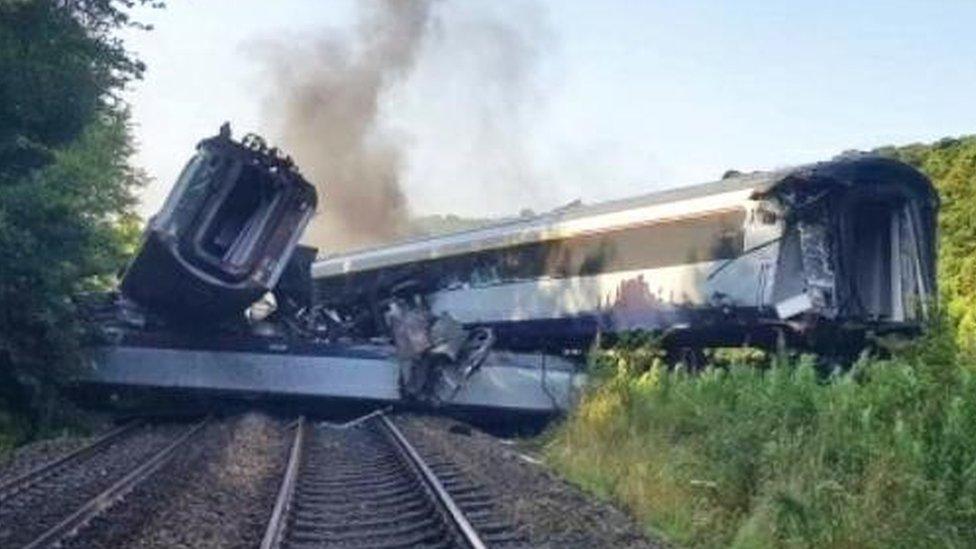Stonehaven derailment: Report recommends aerial safety checks
- Published
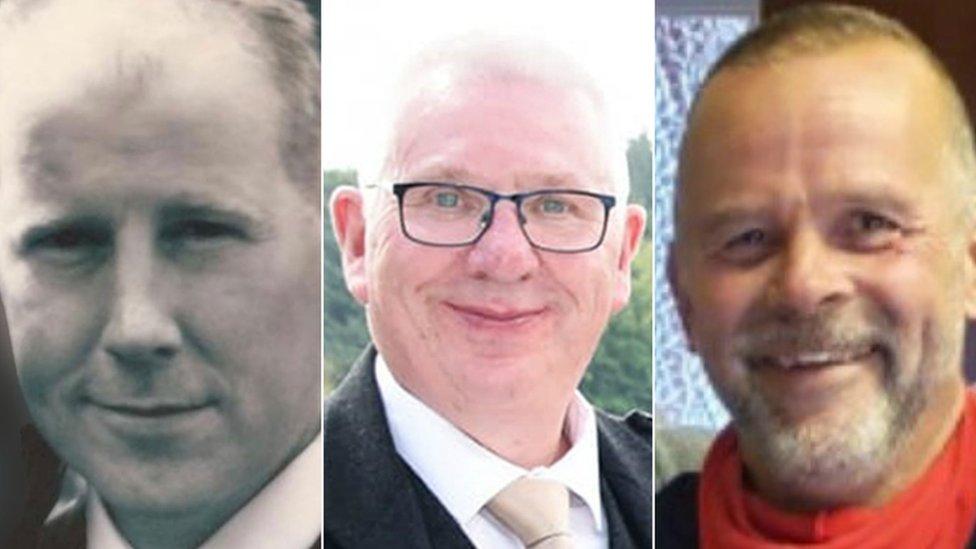
Brett McCullough, Donald Dinnie and Chris Stuchbury died after the train left the tracks
Drones and helicopters should be used more often for railway inspections, an investigation launched after the Stonehaven crash has recommended.
A task force led by civil engineer Lord Robert Mair, of the University of Cambridge, has examined the management of railway cuttings and embankments.
In a report, the group said aerial checks could help identify problems.
Three people died and six were injured when a train travelling from Aberdeen crashed into a landslip last year.
The incident close to Carmont, near Stonehaven in Aberdeenshire, on 12 August followed heavy rain.
Driver Brett McCullough, 45, conductor Donald Dinnie, 58, and passenger Christopher Stuchbury, 62, died when the 06:38 Aberdeen to Glasgow Queen Street train crashed and derailed.
Network Rail's interim report on the crash found that the train "struck a pile of washed-out rock and gravel before derailing".
Lord Mair's UK government-commissioned report said "shortfalls in the earthwork examination and risk evaluation system need to be addressed", with "significant investment" required to update the company's monitoring and surveillance methods.
"More regular and frequent use" should be made of helicopters and drones to identify problems, his task force suggested.
The report was published alongside a study into the impact of heavy rainfall on the railway.
A total of more than 50 safety recommendations were made to Network Rail in the report.
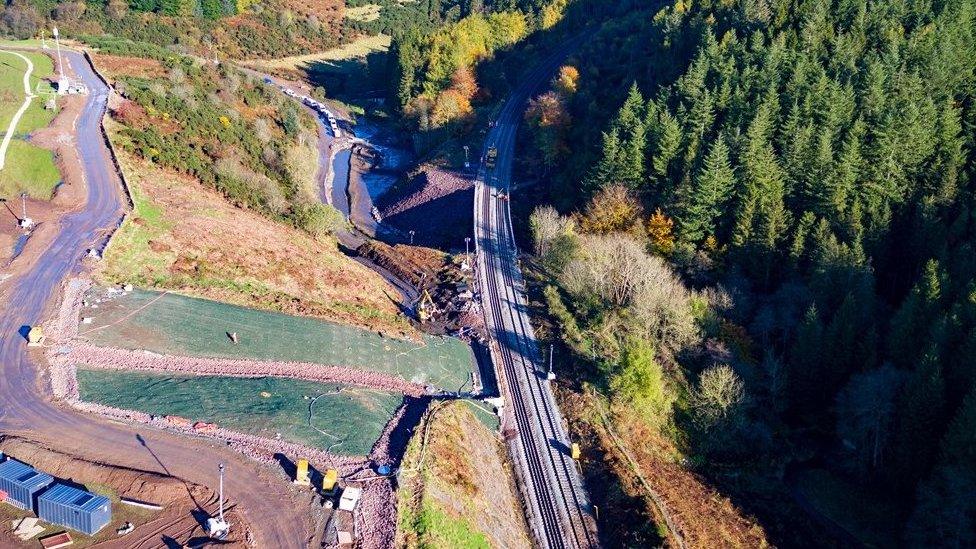
The line at the scene of the crash was repaired and reopened to trains in November
Martin Frobisher, Network Rail's safety and engineering director, said: "It is clear that extreme weather presents a significant challenge to the way we safely and reliably manage railway infrastructure.
"We do a vast amount to tackle the effects of climate change already but there is more to do.
"We established two independent, expert task forces led by world-class specialists to investigate the problems we face and, crucially, to guide us as we make substantial improvements.
"We will carefully consider every single recommendation and develop a science-backed improvement plan, to target available money and technology in the best possible way. This is a real breakthrough."
UK Transport Secretary Grant Shapps said: "We must do everything we can to keep our railways safe."
He added: "These findings will inform our work as we push ahead with measures to make our railway more resilient in future, and less vulnerable to sudden tragedies like that near Stonehaven."
A spokesman for train drivers' union Aslef said the UK government needed to provide Network Rail with sufficient funding "so it can carry out the work that is needed to maintain our rail infrastructure so that passengers, and crew, can be confident of the safety of our railway".
The line at the scene of the crash was opened to trains in November following repairs.
Related topics
- Published3 November 2020
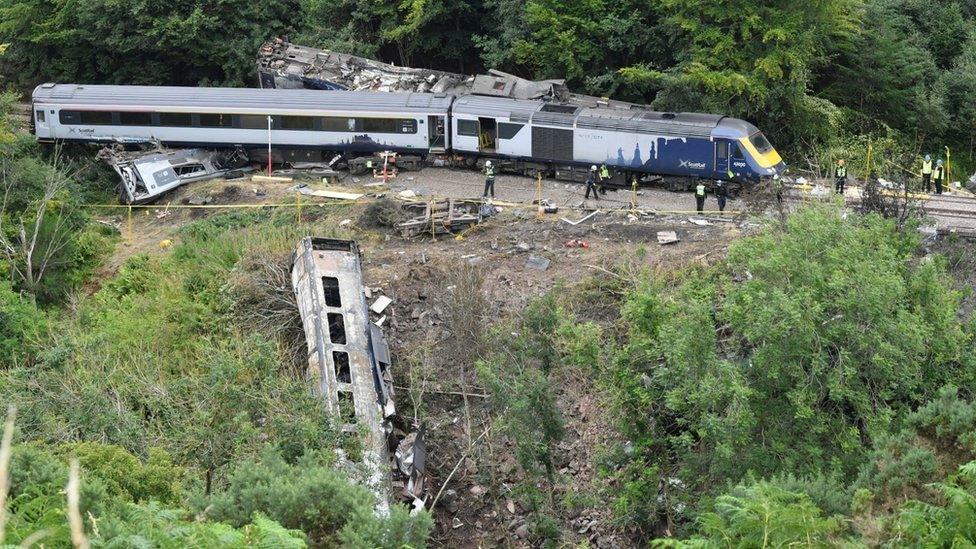
- Published16 October 2020
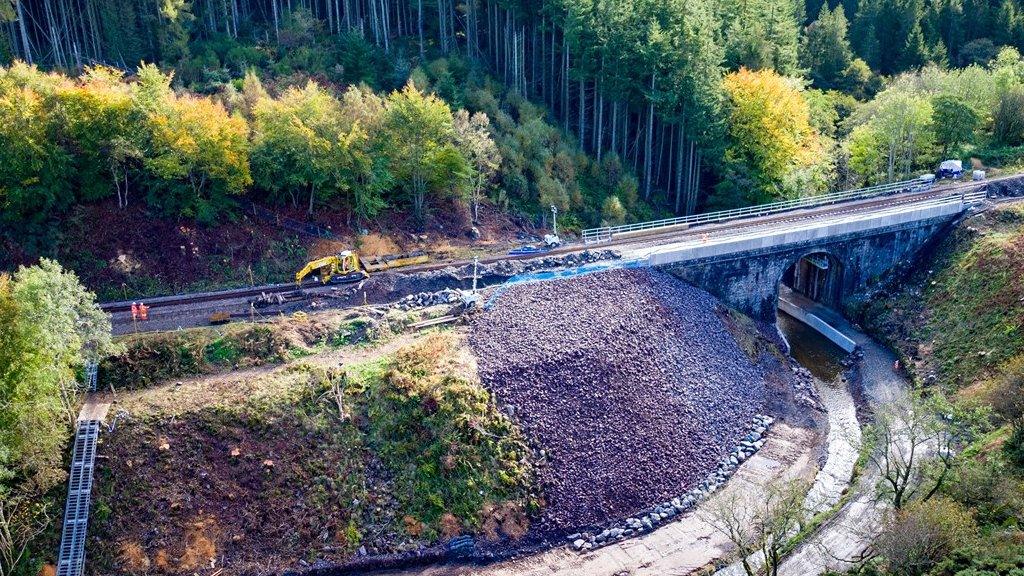
- Published10 September 2020
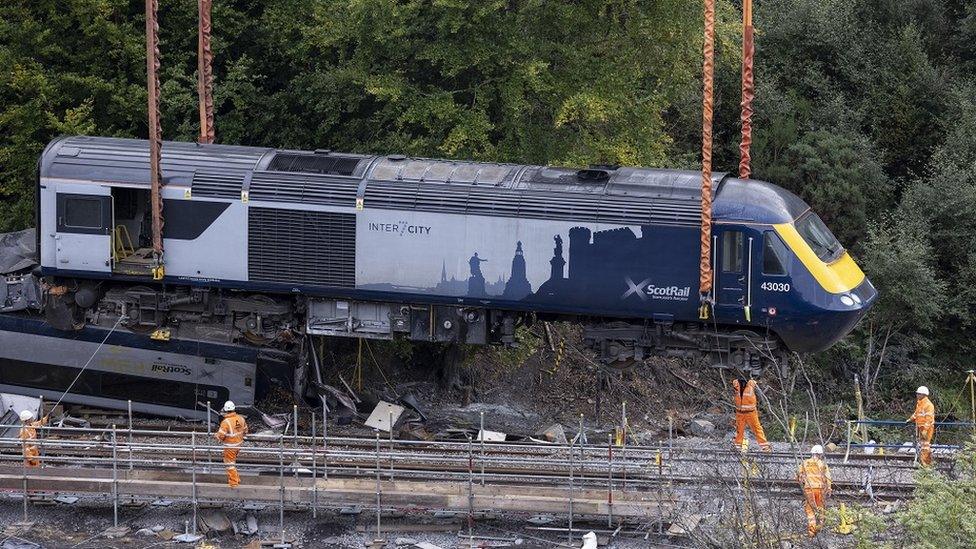
- Published7 September 2020

- Published12 August 2020
